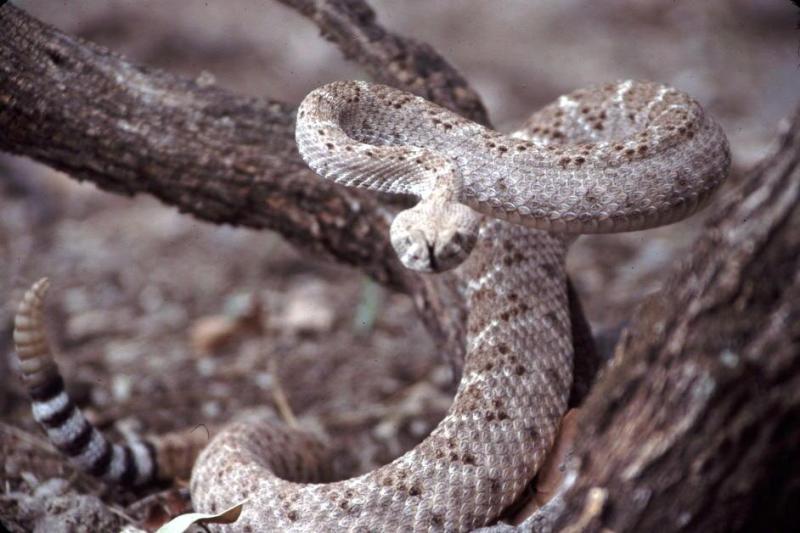Rattlesnake at my Feet
By Dave Hanks
Sometimes strange things happen while photographing wildlife. One of the strangest happened in southeastern Arizona. I had hung my portable blind from a tree limb that was close by a water seep. Firmly ensconced inside the blind, I was listening for any noise to alert me to the presence of something coming to the seep. I heard what I thought to be a strange sounding bird. Looking at the trees and finally at the ground, I was startled to see a Diamond-Backed Rattler 18” from my left foot. One moves very quickly and spontaneously in such a situation. Checking the camera, which was upset in the escape movement, I determined that nothing was broken and after cleaning it off, I proceeded to photograph a new subject.
Rattlers are heavy bodied and this one was about five feet long. Heavy bodied snakes are known as “lay in wait” species that ambush prey coming along a pathway. There are 22 species of rattlers in the U.S.A., 2 species of coral snakes, the Copperhead, and the Water Moccasin (Cottonmouth). At that, we are lucky as venomous snakes only make up about 10% of our snake population. Australia has a 90% ratio of venomous serpents.
This classic S position allows the rattler to strike straight out and their retractable fangs puncture and withdraw easily. Australian snakes, like the Taipan, Tiger Snake, Death Adder, and Brown Snake; strike sideways. This is the fastest method, and they can bite you 5 or 6 times before you can remove your hand. Cobras, the most famous of world snakes, strike downward. This is the least fast method, and one reason that they can be used by snake charmers.
The strength of venom is not the most vital factor in a bite. Sea snakes are highly toxic but produce small amounts of poison. As a rule, the bigger the snake, the more venom produced, and therefore the more dangerous. The huge King Cobra produces so much venom that it is the only animal that can kill an adult elephant.
The WESTERN DIAMOND-BACKED RATTLESNAKE at my feet is nicknamed the “coon-tailed” rattler because of the stripes on its tail. This one kept his eyes and head turned toward me, even though my wife, brother, and sister-in-law came running to investigate - tail buzzing loudly all the while. It was loud enough to be heard at the cabin 40 yards away.
|
